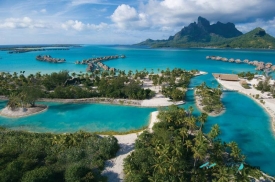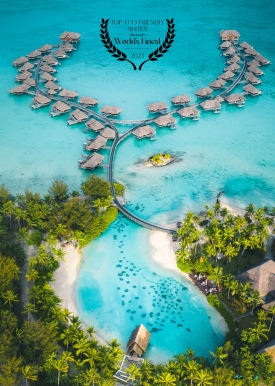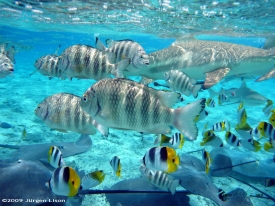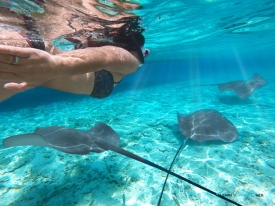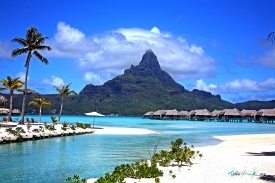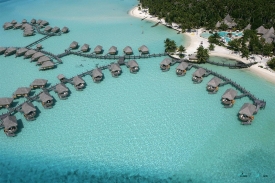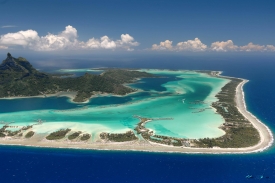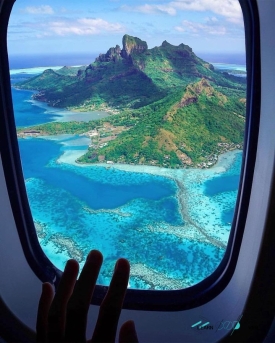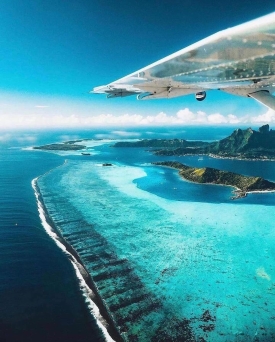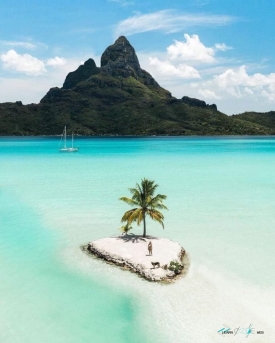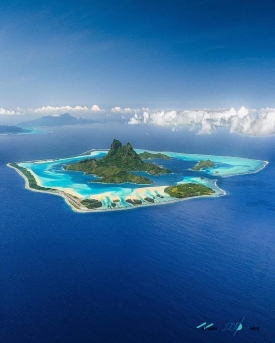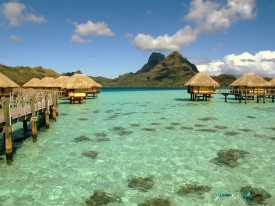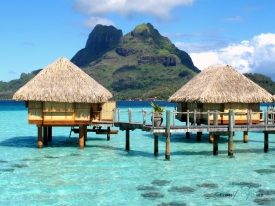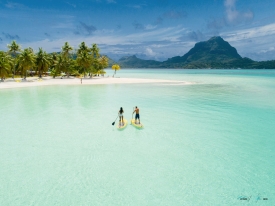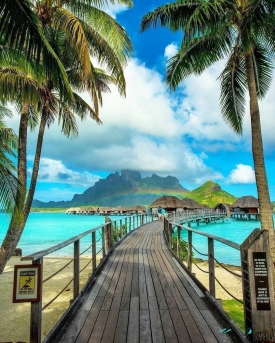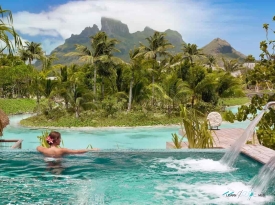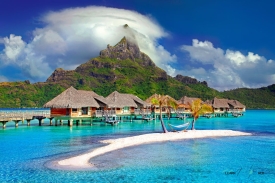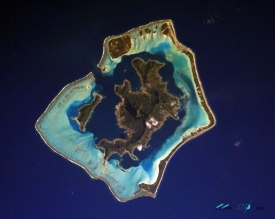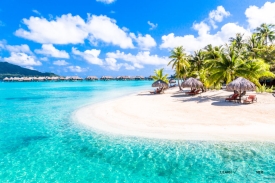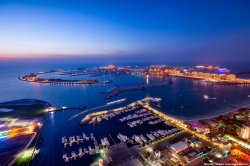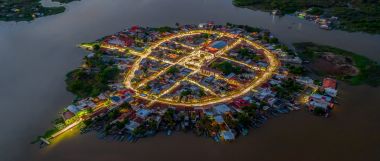ABOUT Bora Bora
Bora Bora, a shimmering jewel in the vast South Pacific Ocean, stands as a renowned tourist destination known for its dazzling natural beauty and luxurious hospitality. This enchanting island group, part of the Leeward Islands in the Society Islands of French Polynesia, spans a total land area of 30.55 km2 (12 sq mi). The main island, surrounded by a mesmerizing lagoon and barrier reef, boasts the remnants of an extinct volcano, Mount Pahia and Mount Otemanu, with the highest point reaching 727 m (2,385 ft).
The island's economy thrives almost entirely on tourism, with several resorts built on the motu surrounding the lagoon. Bora Bora's major settlement, Vaitape, lies on the western side of the main island, opposite the main channel leading into the lagoon. The island's produce is mostly limited to what can be obtained from the sea and the abundant coconut trees, historically significant for the production of copra.
Bora Bora's name has a fascinating history, originally called Pora pora mai te pora, meaning "created by the gods" in the local Tahitian language. Over time, it was abbreviated to Pora Pora, or "first born," and eventually anglicized to Bora Bora. The island's unique phonetic characteristics contribute to the varying spellings and pronunciations in different languages.
The island's history is rich, with Polynesian settlers arriving around the 3rd century. European contact began with Jacob Roggeveen's sighting in 1722, followed by James Cook in 1769. Bora Bora was an independent kingdom until 1888 when it was annexed by France. During World War II, the United States established a military supply base on the island, known as "Operation Bobcat," which left a lasting legacy, including the construction of an airstrip that served as French Polynesia's only international airport until 1960.
Bora Bora's geography is characterized by its extinct volcano, surrounded by a lagoon and fringing reef. The lagoon is home to an abundant marine life and is protected from the open sea by a necklace-shaped coral reef with a single opening, the Teavanui Passage. The island's climate is tropical monsoon, with consistent temperatures throughout the year and a distinct dry season from June to October.
Tourism is the lifeblood of Bora Bora, with over-water bungalows being a standard feature of most resorts. The island offers a plethora of sea-oriented tourist destinations, as well as land-based attractions such as World War II cannons. Popular activities include snorkeling, scuba diving, and exploring the lagoon's rich marine life. Bora Bora's natural beauty extends to its beaches, located in the large bays between Pointe Paopao and Pointe Matira, where visitors can also find the famous bar and restaurant, Bloody Mary's.
Your journey to Bora Bora begins with an international flight to Faa'a International Airport (PPT) in Papeete, the capital of French Polynesia on the island of Tahiti. Major airlines like Air Tahiti Nui, Air France, and United Airlines offer flights to Tahiti from various cities around the world. The most common way to get to Bora Bora is by flying from Los Angeles or San Francisco.
The island's economy thrives almost entirely on tourism, with several resorts built on the motu surrounding the lagoon. Bora Bora's major settlement, Vaitape, lies on the western side of the main island, opposite the main channel leading into the lagoon. The island's produce is mostly limited to what can be obtained from the sea and the abundant coconut trees, historically significant for the production of copra.
Bora Bora's name has a fascinating history, originally called Pora pora mai te pora, meaning "created by the gods" in the local Tahitian language. Over time, it was abbreviated to Pora Pora, or "first born," and eventually anglicized to Bora Bora. The island's unique phonetic characteristics contribute to the varying spellings and pronunciations in different languages.
The island's history is rich, with Polynesian settlers arriving around the 3rd century. European contact began with Jacob Roggeveen's sighting in 1722, followed by James Cook in 1769. Bora Bora was an independent kingdom until 1888 when it was annexed by France. During World War II, the United States established a military supply base on the island, known as "Operation Bobcat," which left a lasting legacy, including the construction of an airstrip that served as French Polynesia's only international airport until 1960.
Bora Bora's geography is characterized by its extinct volcano, surrounded by a lagoon and fringing reef. The lagoon is home to an abundant marine life and is protected from the open sea by a necklace-shaped coral reef with a single opening, the Teavanui Passage. The island's climate is tropical monsoon, with consistent temperatures throughout the year and a distinct dry season from June to October.
Tourism is the lifeblood of Bora Bora, with over-water bungalows being a standard feature of most resorts. The island offers a plethora of sea-oriented tourist destinations, as well as land-based attractions such as World War II cannons. Popular activities include snorkeling, scuba diving, and exploring the lagoon's rich marine life. Bora Bora's natural beauty extends to its beaches, located in the large bays between Pointe Paopao and Pointe Matira, where visitors can also find the famous bar and restaurant, Bloody Mary's.
Your journey to Bora Bora begins with an international flight to Faa'a International Airport (PPT) in Papeete, the capital of French Polynesia on the island of Tahiti. Major airlines like Air Tahiti Nui, Air France, and United Airlines offer flights to Tahiti from various cities around the world. The most common way to get to Bora Bora is by flying from Los Angeles or San Francisco.
The Best Pictures of Bora Bora
Videos of Bora Bora









